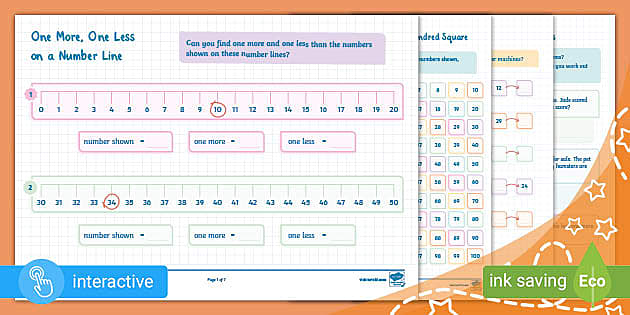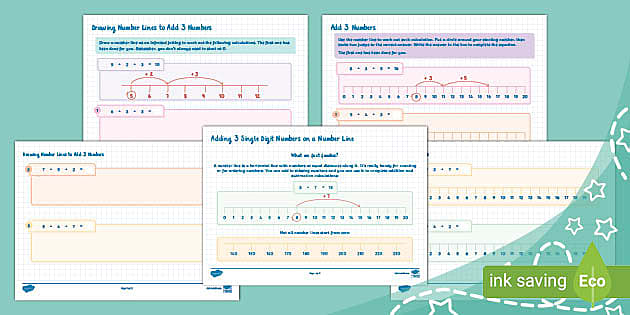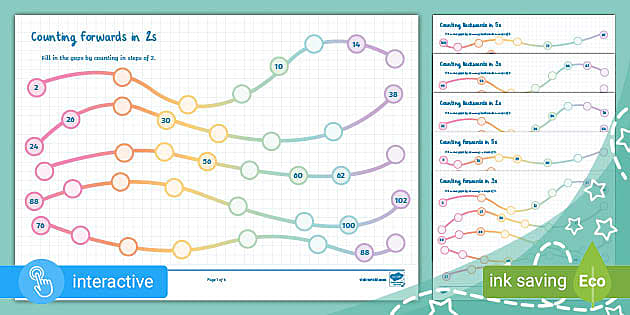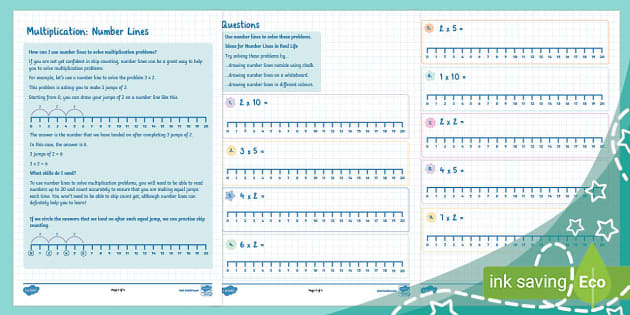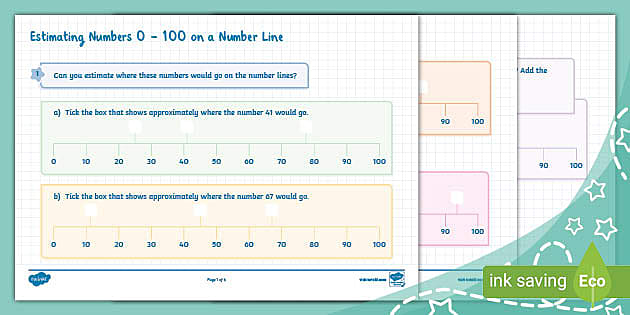


6 min
Check out this blog for helpful tips about how to use a number line for addition, subtraction, multiplication and even division!
Did you know that number lines are one of the most valuable tools to help children with their maths skills in key stage 1? Although they are a basic concept, number lines can help with addition, subtraction, multiplication and division. Read on for more information about number lines and number line activities that you can use with your child at home.
A number line is a visual representation of numbers. A number line will often start from zero. However, it can start from any number! It also does not have to include every number. It may have visible increments or it may be completely blank. A good example of a number line in a real life context is a thermometer, a ruler or a measuring jug.
Children usually begin to use number lines in reception. They are helpful for helping children to count by moving along the number line and pointing to each number in turn. It is important to note that when we use a number line, we count the jumps – whether it is counting in 1s, 2s, 3s, 5s or 10s!
As well as counting, number lines can also be used for finding one more or one less than any given number. For example, you could ask your child to find one more than 5. To do this, they would find the number 5 on the number line and then count forwards to find one more. Similarly, they can count back to find one less.
Using the same principle, children will move on to use number lines for addition and subtraction. Once they are confident counting in ones, they can also use larger numbers to count on in step sizes. For example, if they wanted to solve the calculation 4 + 12, they could begin by adding the ten to get to 14. They would then count on two more ones to get to 16. Or, to solve 5 + 30, they could add 10 three times.
Another great way of using a number line is to find missing numbers. You can replicate this at home using your own visual representation of a number line, for example a washing line. You could peg numbers onto a washing line in order and miss out a number in the sequence. Then, your child has to find which number is missing by looking at the two numbers on either side. Eventually, this will lead on to children using number lines with fewer numbers, for example a number line counting up in 2s or 10s. This is great for helping children to learn their times tables and can help with practising multiplication.
Practise finding numbers on the number line with this Finding Numbers 0 - 20 on a Number Line (Ages 5 - 6).
Use a number line to find one more and one less.
This Adding 3 Single Digit Numbers on a Number Line is great for practising adding three numbers together and using mental maths skills.
Practise subtraction with this Subtraction with a Number Line Resource Pack.
Your child can practise their 2, 3 and 5 times tables and find the missing numbers with this Counting Forwards and Backwards in Steps of 2, 3 and 5.
This Multiplication: Number Lines resource will help to teach your child how to use a number line for multiplication.
Find and estimate missing numbers on a number line with this Ordering and Estimating Numbers 0 - 100 on a Number Line.
This Number Lines Pack has various number lines for you to choose from, including blank number lines.
If you enjoyed reading this blog about How to Use a Number Line in Key Stage 1, why not explore more from our range of maths blogs? For instance, this one about Support Your Child’s Maths Learning: Shape has lots of useful ideas for parents, carers and home educators.
Here are three more to try too!
As well as discussing maths, we also have lots of fun educational activities for your little one at Twinkl Parents:
Our Twinkl Parents Blog Page is full of information, facts and fun activities on every topic. You’ll be delighted to know that they’re free to read.
Are you looking for educational videos to support your child’s learning? If so, why not take a look at Twinkl Kids TV or Twinkl Parents? You and your child will be spoilt for choice with the videos on offer.
You’ll also be pleased to discover what’s on offer at our Twinkl Parents Homework Help. There are facts, information and help for your child throughout their school journey.
Flummoxed by school jargon? Then take a look at our Twinkl Parenting Wiki, where we explain it all in parent-friendly language.
And remember to visit Twinkl Go, full of fun interactive learning games and activities.
Finally, don’t forget to keep in touch and find information on our Twinkl Parents Facebook Page.


Twinkl Parents is here to help parents everywhere understand how they can support their children's education, wellbeing and development. We offer clear guides and explanations on what your child is learning, how you can help them learn it, and where you can find supporting resources and activities. In addition, we have a wide range of games and crafts available for family fun!
Our blog writers have many years of experience in teaching and parenting. Using this dual expertise, their blogs break down the curriculum and 'teacher speak', offer guidance on family wellbeing and provide handy lists of the very best Twinkl has to offer parents on a wide range of subjects.

